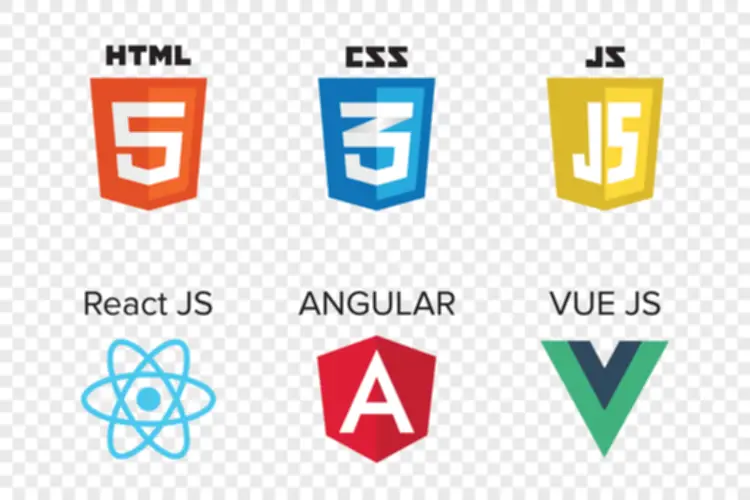By carefully evaluating these components and leveraging the strengths of every framework, you’ll find a way to embark on a growth journey that maximizes productiveness, efficiency, and success in delivering impactful software program options. I have over 20 years of expertise as a software engineer and technical writer. Throughout my profession, I’ve used several programming languages and technologies for the tasks I was involved in, starting from C# to JavaScript, ASP.NET to Node.js, Angular to React, SOAP to REST APIs, and so on. This new framework did not have What is .NET Core the backward-compatibility constraints that the .NET Framework had. Its modular structure offered smaller versions of the framework’s core elements, letting the developer obtain the extra components from the NuGet repository.

Comparing Net Framework, Internet Core, Internet 5, And Net 6
- Elevate your career with our range of free on-line certificates courses designed to cater to people like your self.
- Consider components such as the codebase size, dependencies on particular Windows options, and compatibility of third-party libraries.
- We have already discussed BCL (Base Class Library) within the .Net Framework part.
- One of the defining options of the .NET Framework is its support for constructing desktop, web, and mobile applications using a unified improvement mannequin.
- It leaves behind some Windows-only features, but many of those can nonetheless be supported with the Windows Compatibility Pack extension.
The library developer needs to target that specific .NET Standard version. Finally, the .NET Framework has a mature ecosystem and intensive third-party library support. So, if your project heavily depends on specific libraries, components, or instruments which would possibly be https://www.globalcloudteam.com/ unavailable or suitable with .NET Core, it might be handy to stay with .NET Framework. Because .NET Core is designed with a ‘code as soon as, run anywhere’ philosophy, you will save a lot of time growing apps on .NET Core.
Q4: When To Not Run Net Framework?

Net Solutions is a staff of skilled .NET builders with over 20 years of expertise. We have labored on numerous projects in varied domains, including healthcare, teaching, underground mining, IoT, and cloud kitchens. We have a strong track report of success and may help you together with your subsequent .NET project. Evaluate the existing .NET Framework software to determine compatibility issues, dependencies, and potential challenges for migration. Migrating from .NET Framework to .NET Core includes a considerate strategy. This complete guide offers valuable insights into the migration methods required to transition between the two frameworks.

Q1: Is The Net Core Replacing The Web Framework?
It additionally offers a vast class library, encompassing a variety of performance for tasks corresponding to knowledge entry, networking, user interface improvement, and extra. This complete library of reusable parts accelerates development and simplifies widespread programming duties, allowing developers to concentrate on constructing utility logic rather than reinventing the wheel. However, for Windows-specific applications, legacy methods, or initiatives closely reliant on existing .NET Framework infrastructure, sticking with .NET Framework may be pragmatic. Its in depth class libraries, mature ecosystem, and backward compatibility ensure seamless integration with Windows platforms and present codebases.

Img And Its Successful Journey With Web Solutions
The CLR manages reminiscence, handles garbage assortment, and offers services like security, exception handling, and thread management. You additionally get support for modern dev practices, including microservices, containerization, and DevOps. In fact, .NET Core has built-in support for Docker, making it super-easy for devs to package deal and deploy applications as containers to a spread of environments. Cross-platform support is one of the most essential features of .NET Core, because it allows builders to put in writing code that runs on totally different OS without the need for modifications. I can’t think of any dev that doesn’t appreciate the ability to put in writing as quickly as and run wherever (it’s not just Java that may declare this!). In this text, I will compare and distinction these three platforms by way of their features, traits, advantages, and drawbacks.
Net Core Vs Net Framework: Key Differences, Features, And More
Microsoft on one facet and different independent developers on the other side introduced the .NET Framework to completely different platforms. With this new unified approach, .NET devs should be capable of streamline improvement, improve code sharing and portability, and supply a consistent programming model throughout totally different platforms. What’s extra, .NET Core makes it straightforward to create microservices with completely different languages, the place each service will be an independent, light-weight process that does its job with minimal overhead. These can then be turned into Docker containers that have a very small footprint.

Find centralized, trusted content and collaborate around the technologies you employ most. It’s necessary to assess your project’s particular needs, your team’s experience, and different related factors when deciding to make use of .NET Core.
The Unification Of Net Core & Internet Framework
The new framework was an entire redesign of the .NET specs with cross-platform help in thoughts. The main aim here is to offer all .NET builders the advantages of fashionable dev practices, cross-platform help, improved performance, and better cloud integration. Of course, in terms of smaller functions, the additional overhead from the .NET Framework could appear trivial. Still, should you’re working hundreds of microservices across a number of machines or VMs, additional overhead can add up shortly, which means that .NET Core can supply noticeable performance enhancements for internet or cloud companies.
Wherein .Net Core is the newest model of .Net Framework which is an open-source and cross-platform designed for modern apps. It’s a cross-platform framework that works with Windows, Mac OS X, and Linux.The.NET Core Framework could additionally be used to create a wide selection of apps, including cell, desktop, on-line, cloud, IoT, machine studying, microservices, video games, and extra. This framework consists of various particulars corresponding to developer instruments, programming languages, and libraries to design web and desktop apps. It also has a layout of main necessities for the development of applications similar to Database connectivity, UI, Services, and so on. Or, in more easy terms, we will say that .Net Core is just a subset of .Net Framework.
Be certain to thoroughly test these packages as they could still have issues in the event that they use unsupported APIs. More than simply figuring out what the third-party dependencies are, you should understand how the applying functions with the third-party dependencies that run on .NET Core. For instance, Entity Framework Core is a bit totally different from Entity Framework 6, which runs on .NET Framework. ASP.NET Core may be very completely different from ASP.NET 4, as they’ve redesigned plenty of it for .NET Core. In concept, if you compile code to .NET commonplace, it should be suitable with Framework and Core.
F# is a cross-platform language that also uses object-oriented programming. The learning curve shouldn’t be a problem for builders already working with C and comparable languages. The simplest resolution would be to make a brand new Solution and project based on .NET Core, and transfer your code over.
See the official documentation to take a closer have a glance at the .NET Standard. Even if I’m talking prior to now tense, the .NET Framework remains to be alive and operative. Its current model is 4.eight, and it is the final version of the framework, as you’ll study later.
